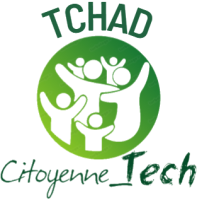- Ce sujet est vide.
- AuteurMessages
leorametters654
Invité<br> Bird’s nest acid, also referred to as sialic acid, sialic acid, scientific name « N-acetylneuraminic acid », is a naturally occurring carbohydrate. Don’t hesitate to get in contact with us if you’re all for wholesale sialic acid, we cannot let you down. Not solely wholesale sialic acid we produced have certificated the worldwide industry commonplace, however we can even meet your customization needs. RNA viruse are likely to have excessive mutation charge-greater than 10.000 occasions higher than that of human or viral DNA- and this is true of all of the influenza viruses. Although the very young and elderly are normally at essentially the most risk from influenza, the influenza pandemic of 1918-1919 was unusual in that mortality was high in health younger adults. All three influenza viruses infect man and trigger disease, but influenza A represents probably the most severe human pathogen as a result of it causes very giant, recurrent epidemic and even pandemic with important mortality. Although it’s not clear whether a brand new pandemic is imminent, it could be prudent to take under consideration the classes now we have learned from learning totally different human and animal influenza viruses. Furthermore, reclassification of influenza A viruses signifies that H1N1 viruses circulated from not less than 1918 till 1957. Thus, it’s now clear that influenza pandemics happen at unpredictable intervals.<br>
<br> The pandemic of 1918 occurred before influenza virus may very well be remoted and it has not been potential to review the virus in the laboratory utilizing trendy tools. 1) Cinti S; Pandemic influenza: are we ready? The speedy, world spread of pandemic influenza could also be a relatively trendy development associated to will increase in inhabitants and the expansion of transportation techniques needed for the global transmission of the novel virus. In distinction to measles, smallpox and poliomyelitis, influenza is brought on by viruses that bear steady antigenic change and that possess an animal reservoir. Recent phylogenetic studies of influenza A viruses have revealed species-specific lineages of viral genes and have demonstrated that the prevalence of interspecies transmission depends upon the animal species. In Florence in the course of the time of the Renaissance, astrologers linked a curious juxtaposition of stars with an outbreak of infection in town and attributed it to the « influence » of the stars, therefore influenza. Known in the sixteenth century as « the newe Acquayntance », influenza still causes main outbreaks of acute respiratory infection. The temperature rises rapidly to around 39 C. Influenza will not be characterized by runny noses or sore throats originally, as are common cold infections. About eighty p.c of them are haemagglutinin antigen and the reminders are one other antigen, neuraminidase, and have a mushroom-like shape.<br>
<br> Influenza A viruses have been designated on the basis of the antigenic relationships of the external spike haemagglutinin (HA) and neuraminidase (NA) proteins. Type B strains are designated on the identical system, however without H and N numbers since main changes in these antigens have up to now not been noticed. These mutations give rise to adjustments within the viral polypeptides, comparable to HA which, out of a total of 250 amino acids, undergoes two or three amino-acid substitutions each year. The sequences from these three victims had been nearly identical and showed that the virus belong to pressure H1N1. Virus multiplies in the epithelial cells in the nose and sinus passages and destroys the cilia, that are an vital aspect in the protection of the respiratory system. If you beloved this post and you would like to obtain far more information pertaining to Supplier of sialic acid powder for drink Ingredients kindly check out the page. There are no distinction between Influenza A and B as regards the clinical picture. There are 4 antigens current, the haemagglutinin (HA), neuraminidase (NA), nucleocapsid (NA), the matrix (M) and the nucleocapsid proteins (NP).<br>
<br> The haemagglutinin (HA) is a rod-formed glycoprotein with a triangular cross-section. In earlier years HA and NA antigens driving from birds and different animals had been given applicable letters (as an example Hsw for haemagglutinin of a swine -type virus or Nav for a neuraminidase of avian origin). It was first recognized by its capability to agglutinate erythrocytes, hence its name, however it’s now apparent that it also has important roles within the attachment and entry of virus to the cells of the host and in determining virulence. Myxo derives from the Greek for mucus and refers to the power of those viruses to attach to mucoproteins on the cell floor; ortho means true or common, as in orthodox, and distinguishes these viruses from the Paramyxoviridae (measles is a member of this family). Although laymen consult with many incapacitating respiratory infection as « flu », true influenza is caused by the small household of the Orthomyxoviridae. They’re: Influenza virus A, B and C in addition to Thogoto-like virus which is a tick-borne virus of mammals. Influenza viruses A and B are carefully related, but influenza A infects a large spectrum of birds and mammals including humans, whereas influenza B infects only people.<br>
- AuteurMessages
